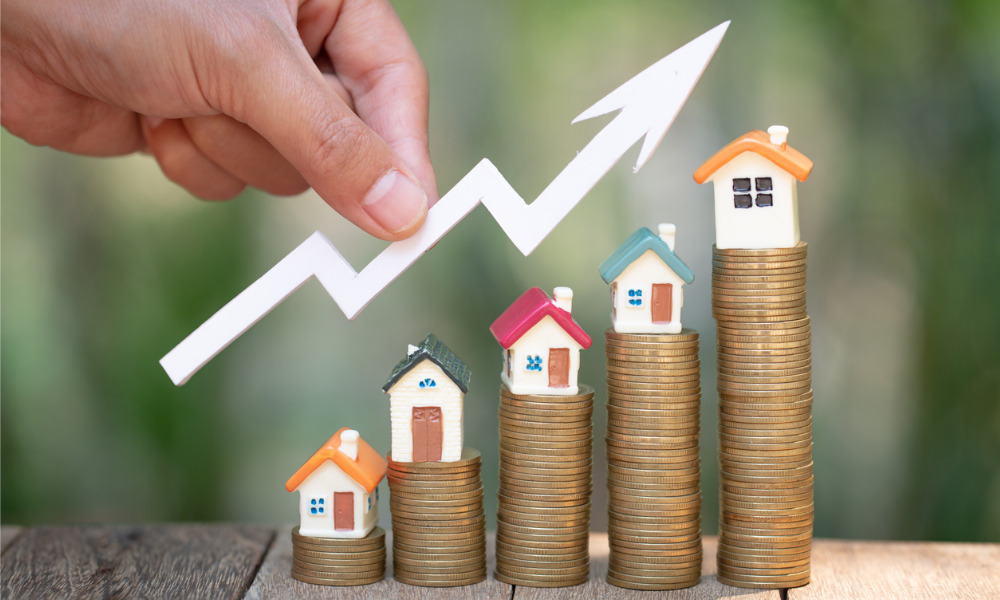Historic data analyses reveal the change in house prices and mortgage repayments

The average UK house price has increased by more than a quarter of a million pounds since the coronation of Queen Elizabeth II and could climb a further £20,000 over the coming years following the coronation of King Charles III, research from gradual homeownership provider Wayhome has revealed.
Wayhome analysed property market data on the average price of a home in today’s market, how this compared to the cost of homeownership back in 1953, as well as the cost of purchasing in an area of the current market with royal patronage.
The latest house price data released by Nationwide last week showed that the average UK house price currently sat at £260,441. Back in 1953, when the coronation of Queen Elizabeth II took place, the average UK house price was just £1,884.
This means that between the coronation of Queen Elizabeth II and the recent coronation of King Charles III, the average UK house price increased by a huge 13,724%. Even after adjusting for inflation, the average price of a property in 1953 was still a comparably affordable £42,633, meaning that today, house prices are still some 511% higher.
Meanwhile, the average person today earns £33,402 per year, 8,821% more than the £374 annual earnings in 1953. Adjusted for inflation, this £374 equates to an annual salary of £8,463 which means that wages have increased by 295% since 1953, versus an inflation adjusted increase of 511% in the average price of a home.
As a result, the average person required five times their income to afford a home in 1953, while today, this has climbed to 7.8 times income.
Wayhome said that it could still get worse for those struggling with the affordability of homeownership. In the five years that followed the coronation of Queen Elizabeth II, house prices increased by 7.5% from an average of £1,884 to £2,026. Should the same level of house price appreciation materialise following the coronation of King Charles III, house prices could increase by £19,637 by 2027.
“In the 70 years since the coronation of Queen Elizabeth II, house prices have soared and even after adjusting for inflation, the average homebuyer now faces a considerably larger hurdle when it comes to the cost of homeownership compared to 1953,” Nigel Purves, co-founder and chief executive of Wayhome, commented. “At the same time, wages have increased notably but have failed to match the pace of the UK housing market by quite some margin.
“Those priced out of the property market will be hoping we don’t see the same meteoric rates of house price growth between now and the coronation of our next monarch.”
Mortgage repayment also rose exponentially
Market analysis by the debt advisory specialists Sirius Property Finance has revealed that while mortgage rates are lower today than they were at the time of Queen Elizabeth II’s coronation, the average monthly mortgage repayment has increased by 472%.
Sirius said that despite a string of interest hikes from the Bank of England, today’s homebuyer is actually better off when borrowing, at least where the average mortgage rate is concerned. The current average mortgage rate sits at 3.99%, 5.1% less than the average rate back in 1953.
However, with the current average UK house price, homebuyers need to borrow £219,398 after placing a 15% deposit. Based on the same 25-year term at the average rate of 3.99%, the average buyer today is making a full monthly mortgage repayment of £1,157 per month. This means that the average monthly cost of repaying a mortgage has climbed by 472% since the last coronation.
“A lot has changed in 70 years, and our country is no exception,” Nicholas Christofi, managing director of Sirius Property Finance, commented. “But it’s still striking that comparable mortgage rates are actually lower today despite the numerous base rate increases seen since December 2021.
“Of course, with house prices having increased dramatically since 1953, the actual cost of securing and repaying a mortgage is now far higher, and so, while rates may still be comparatively low, today’s homebuyers face a far tougher task financially.”
Want to be regularly updated with mortgage news and features? Get exclusive interviews, breaking news, and industry events in your inbox – subscribe to our FREE daily newsletter. You can also follow us on Facebook, Twitter, and LinkedIn.



